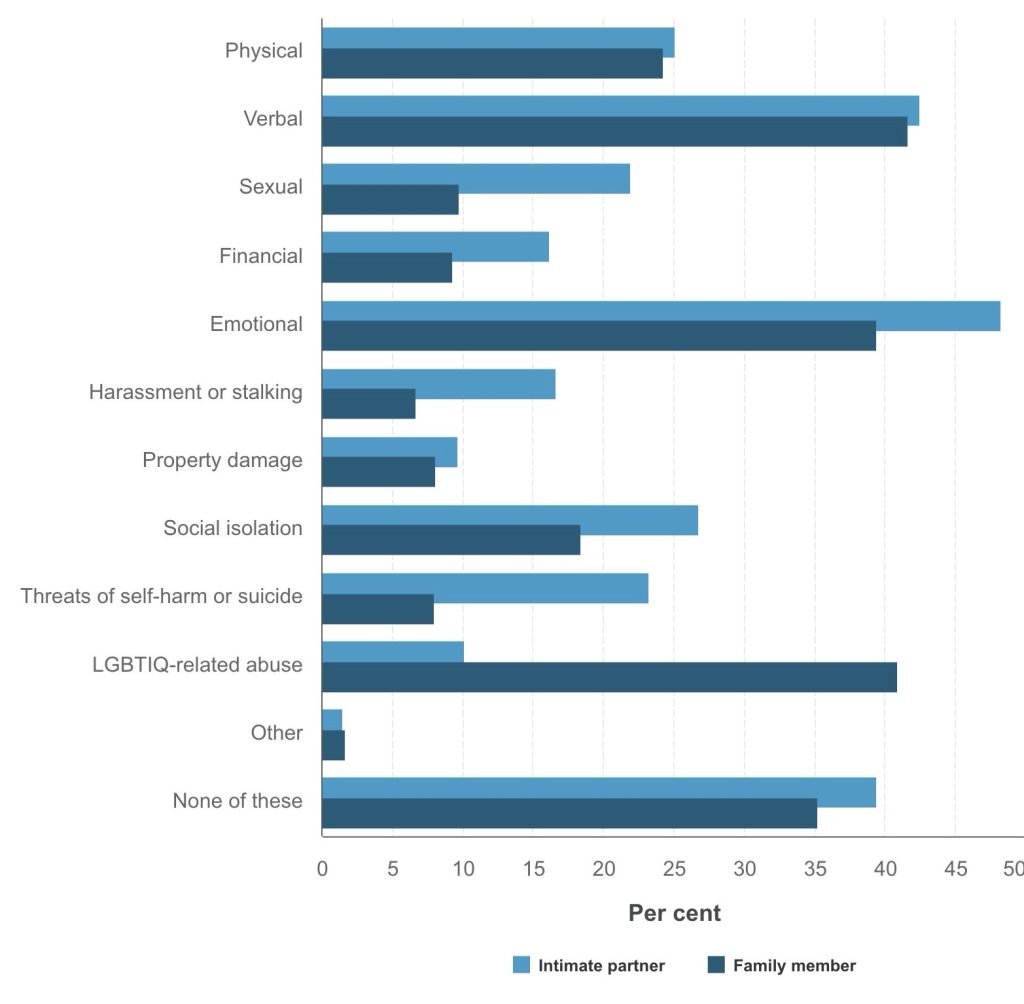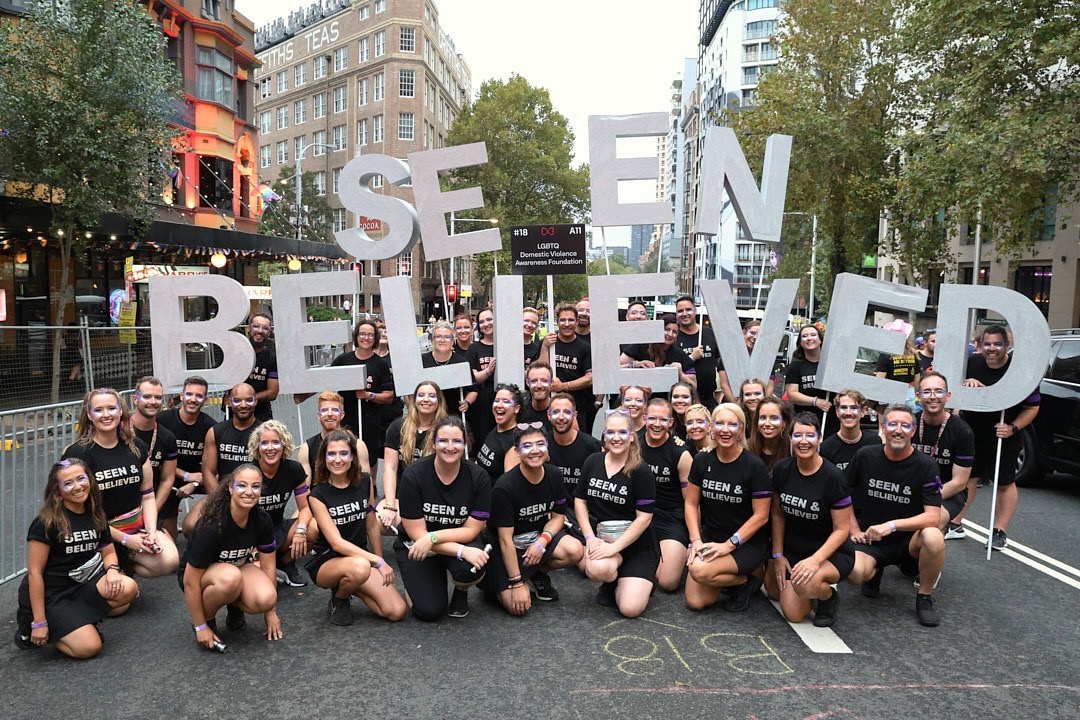Last week, on 28 May 2025, Australia marked the fifth annual LGBTQ Domestic Violence Awareness Day, which aims to raise public awareness of intimate partner violence among the LGBTQIA+ community.
Inside Jackson’s Silence: A Survivor’s Truth
Even on a day dedicated to support and visibility, victims like Jackson (a pseudonym) are still left unseen.

Jackson, a 22-year-old university student, experienced verbal and psychological abuse in his cohabiting relationship. However, he only realised he needed help once he had emerged from the darkness.
Jackson recalls that during the first few months of his courtship, he and his boyfriend, who was five years older than him, enjoyed a sweet relationship. But soon, his boyfriend began to display extreme coercive control.
Jackson said, “He checked my phone and stopped me from seeing my friends. If I didn’t comply, he’d threaten to out me — to tell my family about my sexuality before I was ready.”
“I wasn’t sure if it was really abuse. I only knew it felt too difficult to tell anyone about it.”
The use of sexual identity as a weapon — through humiliation or the threat of outing — is a recognised pattern of coercive control in LGBTQ+ partner abuse. Jackson’s story is not an isolated case in the statistics.
The Stark Truth in the Numbers
Over 60% of LGBTQIA+ adults have experienced intimate partner or family violence at some point in their lives, according to the Private Lives 3 national survey— including incidents of sexual violence.

Among all individuals who experience partner violence, emotional and verbal violence are the most common forms.
Research shows that 48.1% of respondents have experienced emotional abuse, 42.4% have been verbally abused or belittled by their partners, and 27.0% have been socially isolated. Also, 14.6% of sufferers have experienced identity-related violence.
Why Speaking Out Is So Hard: Four Emotional Barriers Facing LGBTQIA+ Survivors of Abuse
Even when experiencing intimate partner violence (IPV), many LGBTQIA+ victims delay seeking help. Studies have shown that they face not only physical danger, but also invisible barriers at the psychological, social, and institutional levels. This resistance is mainly manifested in the following four aspects:
- Unable to recognise the nature of violence
Many individuals are unaware that controlling, humiliating, and threatening to out someone are also forms of IPV. In LGBTQ relationships in particular, the lack of social norms and education causes many victims to question, ‘Is this domestic violence?’
- Skepticism about whether the service is ‘designed for people like me’
“Will they understand me?” “Is support only available to heterosexual women?” Many victims worry that they will be marginalised or not treated seriously.
- Eroded trust in traditional support services
Having experienced discrimination, indifference, or been explicitly or implicitly told that ‘this isn’t a problem for people like you,’ many LGBTQIA+ survivors have lost trust in traditional support services such as police, hospitals, and counselling institutions.
- Fear of being outed and losing critical relationships
Abusers often use the threat of “outing” as a means of control. For individuals who haven’t come out or are in the process of gender transition, disclosing abuse may risk not only their privacy, but also lead to family estrangement, job loss, or even homelessness.
“I know I need help, but I’m more afraid that if I speak up, everything will fall apart, like it’s kicking me out of the few remaining relationships I have.” ——Jackson
Structural Gaps: Their Needs Are Overlooked
Even though, in recent years, some organisations have begun to pay attention to the plight of the LGBTQIA+ community in domestic violence.
The system of Gay and Lesbian Liaison Officers (GLLOs), which has been established in several Australian states and territories, is precisely designed to improve the policing system’s response to LGBTQIA+ victims by providing a more sensitive and inclusive avenue of support. In some communities, this system does play a role in promoting a sense of safety and trust.
Nonetheless, the GLLO system still faces challenges in its implementation.
First, there are inequalities in its coverage and resource allocation. GLLOs are limited in number in some areas, and the role is often performed by general police officers, rendering it difficult for them to fulfil their duties on a dedicated basis.
Next, public awareness about the role of GLLOs is insufficient, with many victims not aware of the existence of the service or how to access support when facing a crisis.
Moreover, a historical mistrust of the policing system still exists amongst some LGBTQIA+ people, which to some extent undermines the utilisation and effectiveness of the GLLO mechanism system.
At the same time, for some gay or bisexual men, seeking refuge is itself full of obstacles. Many domestic violence shelters have traditionally catered for women, which often leaves them with nowhere to go when they need help the most. Simultaneously, victims who experience violence in lesbian relationships may also fear that calling the police will not be taken seriously because of the gender of the perpetrator.
‘I was too scared to call the police at that time,’Jackson recalls, ‘would the police take what was going on between two men seriously? I was even worried that they would take it as a joke.’
Let Them Be Seen: A Call from Silence to Change
In order to truly ‘see’ the invisible victims of LGBTQIA+ intimate relationships, an institutional, cultural and public perception approach must be taken to break the silence imposed on them by their identity. Especially when it comes to the manipulative violence of “ outing threats”, any neglect means continuing to isolate the victims.
First and foremost, enhancing the sensitivity of data collection to gender and sexual diversity is essential. Domestic violence surveys should include SOGIE indicators to better track violence in same-sex relationships and highlight identity-based abuse, such as outing threats.
Second, improving the cultural competence and identification of frontline service providers is a key step in making LGBTQIA+ victims feel safe. Police, legal aid, medical staff and counsellors need to receive ongoing training on identity manipulative violence and trauma responses to ensure that negative responses such as ‘it’s your circle’ are avoided.
Further, expanding the reach and accessibility of LGBTQ-friendly resources provides a substantial pathway of support for victims. For instance, organisations such as ACON’s Say It Out Loud platform and the LGBTQ Domestic Violence Awareness Foundation are attempting to build bridges of trust for victims through online education, private and safe shelters, and community hotlines.

To be seen is the first step toward change. Let’s bring them out of the silence — together!
If you or anyone you know needs help:
- Call 1800RESPECT at 1800 737 732 for 24/7 counselling and support.
- For LGBTQIA+ peer support, contact QLife at 1800 184 527
- ACON – Health and support services for LGBTQIA+ communities in NSW, click here.
- Gay and Lesbian Liaison Officers (GLLOs) are specially trained to support LGBTQ+ people. For more information on GLLOs, click here.
References
Bradshaw, P. (2018). The online journalism handbook : skills to survive and thrive in the digital age. Routledge.
New South Wales Police Force. (n.d.). LGBTIQ – NSW Police Public Site. Www.police.nsw.gov.au. https://www.police.nsw.gov.au/safety_and_prevention/your_community/working_with_lgbtqia
Sexual Violence Response Training Australia. (2024, June 4). By Dr Reena Sarkar During Pride Month it is important, as well as celebrating the LGBTQIA+ community, to also recognise and acknowledge the ways that inequality in our society still exists. By doing this we can work towards a safer, and more inclusive Australian community. Linkedin.com. https://www.linkedin.com/pulse/prevalence-family-sexual-violence-against-1rnsc?trk=public_post

Be the first to comment